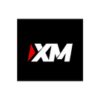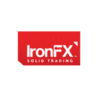With 89% of small businesses considering alternatives due to underservice, banks have a key opportunity to meet SME needs.
99.9% of all firms in the country are small businesses, according to the U.S. Small Business Association. It would seem reasonable that obtaining seamless access to financial services would be simple given the size of the pool. However, that isn’t always the case. In fact, 89% of small businesses feel their major banks are underserving them, and they are thinking about switching to a more accommodating alternative payments technology provider, according to Capgemini’s 2022 World Payments Report. This is due to the fact that these alternative lenders may frequently give repayment terms and underwriting requirements that are more accommodating while charging only marginally more interest.

This figure is significant because banks have a great chance to serve the needs of their small- and medium-sized enterprise (SME) clientele, and they are more motivated than ever to do so in light of current economic challenges, capital costs, and new regulations like ISO 20022, which give banks access to a wealth of new and improved data.
In other words, banks should take this chance to further expand the exposure of their balance sheets to a relatively untapped market. In other words, facilitating the process of offering SMEs working capital options and making them more easily accessible.
Fulfilling Demand in the Market
Offering term loans and standard credit lines, which involve a lot of paperwork, time, and effort, is insufficient for banks. Rather, banks have the ability and ought to adopt a different approach to customer payments by providing flexibility during the entire payment procedure. It is comparable to small enterprises’ buy now, pay later (BNPL) model.
Compared to most alternative providers, banks are in a far better position to supply this kind of lending option. This is because, as a result of their longevity and established clientele, they are frequently regarded with greater trust. In addition to their familiarity with regulatory requirements, banks also often have more reliable funding and revenue streams—two things that alternative providers still struggle with.
Larger financial institutions (FIs) can step in immediately to address the demands of SMEs while younger businesses continue to consider the effects of possible laws, market volatility, and funding issues. Banks can build an underdeveloped market and gain access to another revenue source by providing installment payments. Furthermore, they will be in a stronger position to maintain ties with their SME clients if they advance to more sophisticated solutions with a user experience akin to that of a consumer.
Providing SMEs with Payments Like Consumers
Banks can assist in managing the restricted cash flow that SMEs frequently experience by providing a lower-risk line of credit that protects the bank while saving SMEs money. Banks can engage directly with SMEs throughout their travels thanks to advanced installment alternatives, which strengthens the relationship by offering a better customer experience with a retail banking feel.
Example: A general contractor wants new equipment to boost building site productivity. Instead of paying in whole or securing a loan, the general contractor can notify their bank of the transaction. Depending on its risk decisioning and management architecture, the bank can offer the owner installment payments for the equipment.
Banks may prolong this offer throughout or after the sale, giving general contractors and other small to medium-sized business owners more cash flow control. Similar to how BNPL benefits consumers, SMEs no longer need to delay larger purchases that can help them succeed and last.
Next, how might commercial banks help SMBs make installment payments? Modernizing again is the response. Many payment technology companies can help FIs update their technology to suit SMEs’ new installment requirements. To choose the ideal paytech partner, banks must consider how the provider can help them accomplish their installment targets without interfering with other products or business lines. Customization, cloud capabilities, and system adaptability are also important.
There is a great chance for FIs to earn transaction income because the installments market is still very young and lacks a clear leader, especially for SME clients. To get started on their route to increasing their market share, all they need is the appropriate technology. Ultimately, the combination of expedited decision-making and credit disbursement with an exceptional customer experience is what will prevent SME clients from defecting to other service providers.











